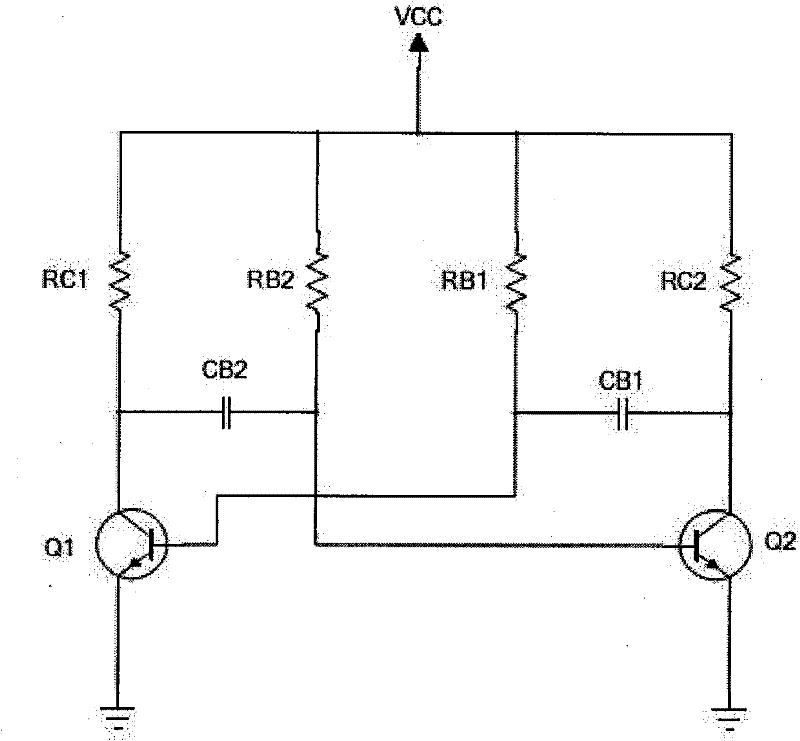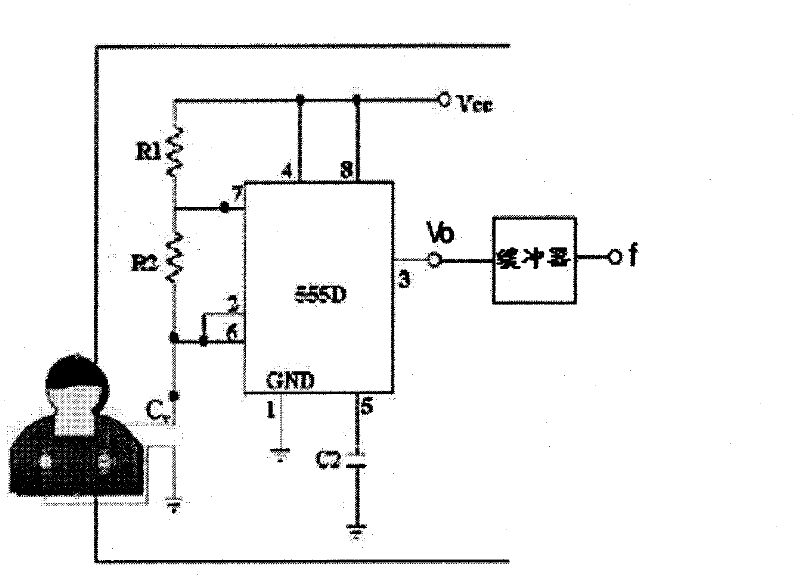Method and system for generating physiological signals using cloth capacitive sensors
A capacitive sensor, physiological signal technology, applied in the direction of sensors, applications, medical science, etc., can solve the problem of not considering the equivalent parasitic capacitance
- Summary
- Abstract
- Description
- Claims
- Application Information
AI Technical Summary
Problems solved by technology
Method used
Image
Examples
Embodiment 1
[0160] Using a single silver fiber cloth in contact with the skin of the hand, the movement of the frequency can be read, as shown in Tables 1-1 and 1-2.
[0161] Table 1-1: Single Conductive Zone Test
[0162]
[0163] Table 1-2: Single Conductive Zone Test
[0164]
[0165] From the results in Tables 1-1 and 1-2, we can interpret as Figure 13 In the model shown, under normal conditions, the impedance of human skin is about 500-1000 ohms, so the human body is regarded as a good conductor. Therefore, the change in frequency only represents the capacitance change between the cloth and the skin in the conductive area, but due to the body itself There is also an equivalent parasitic capacitance C3 whose capacitance (C3) is lower in value than the capacitance C1 between the skin and the fabric in the conductive area. Since the equivalent capacitance Ceq we measured is C1 and C3 in series, its value is:
[0166]
[0167] The period C3 is very small, so the total value ...
Embodiment 2
[0170] Two conductive areas are used to contact the skin of both hands, one hand is the conductive area cloth, the other hand is the traditional electrode as the conductive area cloth, and the traditional electrode is connected to the ground of the circuit.
[0171] The data are shown in Table 2-1 and Table 2-2. Table 2-1 is the result of using a silver fiber cloth alone, and Table 2-2 is the result of using a silver fiber cloth covered with sponge as the electrode. The model of this data is as follows Figure 14 As shown, since one hand is in contact with the conventional electrode, the capacitance between the conventional electrode and the human body is almost equal to zero. Therefore, the capacitance between the traditional electrode and the human body will cause the parasitic capacitance C3 to be relatively short-circuited, so that the equivalent capacitance Ceq of the entire system is approximately equal to C1.
[0172] The actual operation data is as follows. In Table 2...
Embodiment 3
[0182] Use two conductive area cloths to contact the skin of both hands, one conductive area cloth is silver fiber cloth; the other conductive area cloth is silver fiber cloth wrapped with sponge. The results are similar to those in Table 2-1 and Table 2-2, but the effect is better when the sponge electrode is placed. The frequency shift between these two cases is very pronounced.
[0183] Our data are shown in Table 3-1, Table 3-2 and Table 3-3. Table 3-1 shows the use of two silver fiber cloths. Table 3-2 uses one silver fiber cloth; the other uses silver fiber cloth to wrap the sponge. Table 3-3 uses two silver fiber cloths to wrap the sponge. The model for this data is Figure 16 As shown in the figure, because the two conductive area fabrics generate two capacitances C1 and C2 when the electrodes are in contact with the skin. Therefore, the entire system has C1, C2 and the parasitic capacitance C3 of the human body, so the equivalent capacitance Ceq is approximately e...
PUM
| Property | Measurement | Unit |
|---|---|---|
| Resonance frequency | aaaaa | aaaaa |
| Resonance frequency | aaaaa | aaaaa |
Abstract
Description
Claims
Application Information
 Login to View More
Login to View More - R&D
- Intellectual Property
- Life Sciences
- Materials
- Tech Scout
- Unparalleled Data Quality
- Higher Quality Content
- 60% Fewer Hallucinations
Browse by: Latest US Patents, China's latest patents, Technical Efficacy Thesaurus, Application Domain, Technology Topic, Popular Technical Reports.
© 2025 PatSnap. All rights reserved.Legal|Privacy policy|Modern Slavery Act Transparency Statement|Sitemap|About US| Contact US: help@patsnap.com



